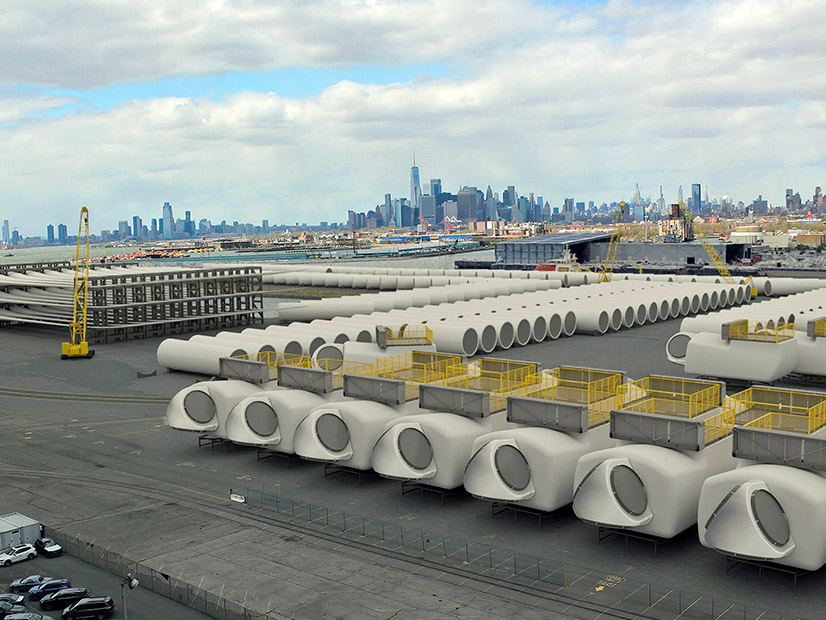
Empire Wind 2 has dropped out of New York’s renewable energy pipeline, but its developers are looking for new ways to bring the proposed offshore wind farm to construction.
The Equinor/bp project would have a nameplate capacity of up to 1,260 MW as contracted. It is one of four New York projects — and several more in other Northeast states — with financial problems that reached crisis proportions in 2023.
It is the first to drop out in New York.
On Jan. 3, Equinor announced that it and bp had agreed with the New York State Energy Research and Development Authority to terminate the offshore renewable energy certificate (OREC) agreement for Empire Wind 2. The company said this will enable it to seek other offtake opportunities but did not clarify its plans further.
Equinor told NetZero Insider via email that the OREC agreement for Empire Wind 1 — the 816-MW first phase — remains in place. But the company would not say whether it plans to move forward with Empire Wind 1 as is, or would seek to rebid that project.
Nor would it say whether it plans to rebid Empire Wind 2 in New York or look to another state for a better deal.
However, it did express a firm desire to move forward with Empire Wind, a mature project in advanced stages of development. Federal regulators have granted the key final approval for both phases of Empire Wind, and state regulators have issued a key approval for the first phase.
New York and its neighbors along the coast — Massachusetts, Rhode Island, Connecticut and New Jersey — are at the forefront of establishing the American offshore wind industry. But all five states ran into major problems with their contracted projects starting in late 2022.
One after another, developers who had locked in their revenue but not their construction costs saw the finances for their projects become untenable amid decades-high inflation and interest rates.
Power purchase agreements for two projects in Massachusetts and one in Connecticut were canceled, putting all three projects in limbo. A two-phase project in New Jersey was canceled outright. A Rhode Island proposal was rejected as too expensive.
And developers of four projects that would feed the New York grid said they probably could not move forward to construction without more money from the state, which decided in October not to give them. (See NY Rejects Inflation Adjustment for Renewable Projects.)
Those four projects — Empire Wind 1 and 2; Beacon Wind, another Equinor/bp project; and Sunrise Wind, an Orsted/Eversource project — total 4,230 MW of capacity. They form an important part of the state’s strategy for making a clean energy transition and building a clean energy economy: Manufacturing development, port construction and workforce training are tied to the various proposals.
NYSERDA has been scrambling to not only salvage the four struggling offshore projects but add new projects to the pipeline.
In late October, it provisionally awarded contracts to three new projects totaling 4,032 MW: Attentive Energy One, Community Offshore Wind and Excelsior Wind. Importantly, that round of awards gave developers the option of including post-award/pre-construction inflation adjustments in their proposals.
Asked Wednesday for comment on Empire Wind 2, NYSERDA focused on positive details. “NYSERDA remains committed to advancing clean energy at the best value for New Yorkers, and we are encouraged that Equinor and bp continue to be committed to developing the offshore wind industry and New York’s green economy as they reset this project,” a spokesperson said.
In their official announcement Wednesday, Equinor and bp also struck an optimistic tone, continuing to emphasize the benefits Empire Wind could provide.
“The Empire Wind 2 decision provides the opportunity to reset and develop a stronger and more robust project going forward,” said Molly Morris, president of Equinor Renewables Americas. “We will continue to closely engage our many community partners across the state. As evidenced by the progress at the South Brooklyn Marine Terminal, our offshore wind activity is ready to generate union jobs and significant economic activity in New York.”
“Bp is supportive of NYSERDA’s leadership and commitment to offshore wind, which we believe is a critical part of New York state’s and America’s clean energy future,” said Joshua Weinstein, bp’s president of offshore wind Americas. “Offshore wind can deliver reliable renewable power as well as economic benefits to the state and its communities.”


